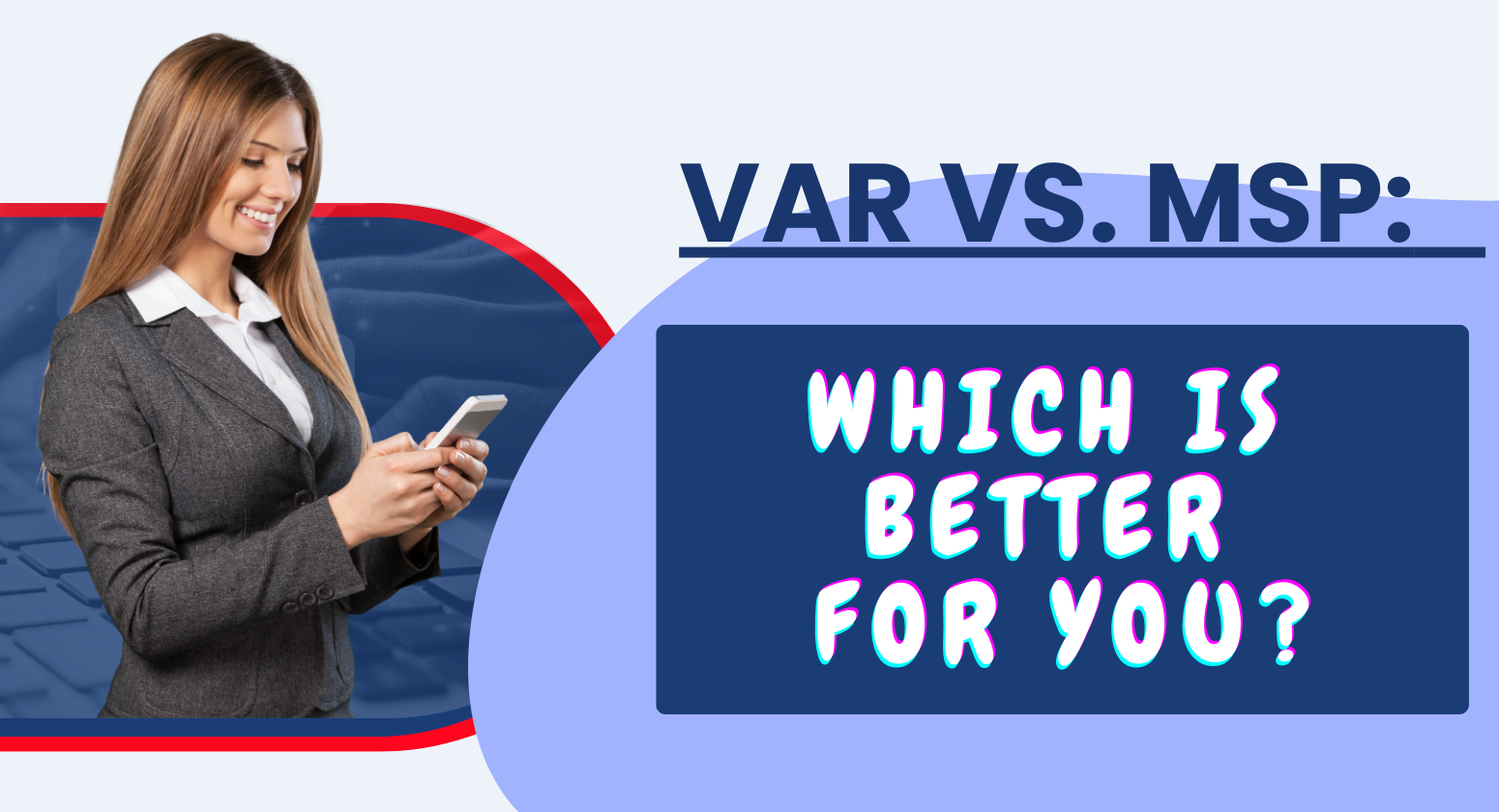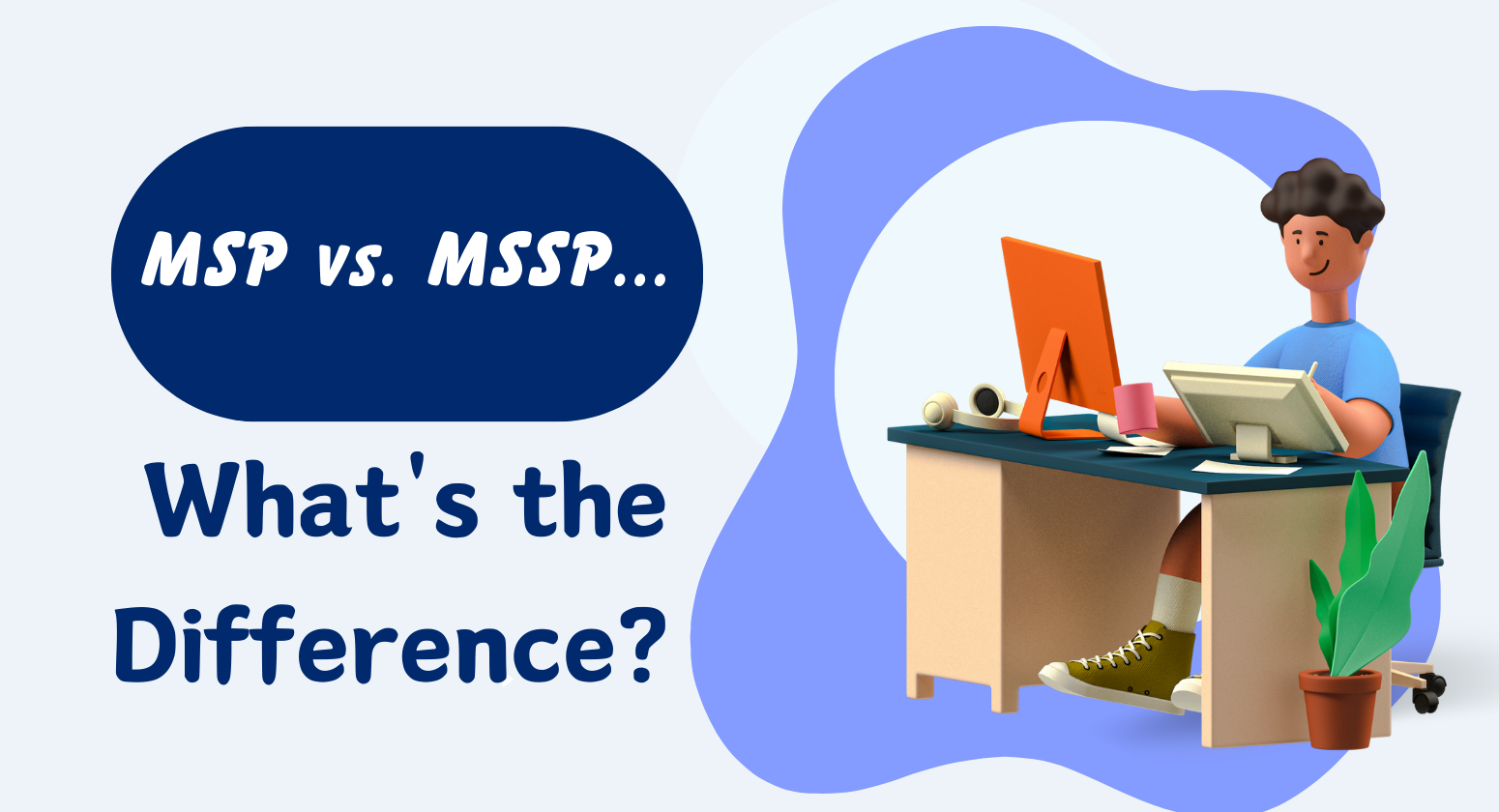
Whether you’re already operating as a VAR and looking to transition to the world of MSP, or you’re just setting up your business and wondering which is better, a thorough understanding of these two acronyms is going to help you out.
Both VAR and MSP businesses operate in the business and technology services industries but refer to different types of businesses and business models.
This article is going to take a closer look at both VAR and MSP to help you determine which business model is right for you. Take a look now to learn more.
VAR Vs. MSP: The Basics 🧑💻
Even if you’re already operating as a VAR, you may find that the MSP acronym leaves much to be imagined. It can be difficult to get your head around what both these business models actually entail and how they work when put into action.
Below is a basic overview of both VARs and MSPs to help you fully understand what each business type entails.
What Is VAR?

Source: LinkedIn
VARs, or Value-Added Resellers, are businesses within the business services industry that resell tech products, like software, to other businesses. Rather than just being a middle-man, though, these businesses add value to the products before selling them, often including services like customization, integration, and support.
VARs focus primarily on sales and selling the tangible products that they stock. They make most of their month through the resale of products, and additional revenue comes from the value-added services that they provide.
VARs can be on-site and cloud-based businesses and often aid both large enterprises and SMEs. VARs are attractive to clients looking for a one-stop experience, i.e., if they have an extensive project and need lots of different software products, they could go to a VAR to ensure all their needs are met in one simple transaction.
What Is MSP?
An MSP, or a Managed Service Provider, is a business that provides ongoing and proactive management of a company’s IT, infrastructure, or end-user systems. Services MSPs offer can vary but may include network monitoring, security, data backup, customer support, and more.
When compared with VARs, MSPs are much more service-oriented. While a VAR looks to sell a product, an MSP offers support to its clients. MSPs often aim to nurture a good relationship with their clients and support them with various services to ensure the smooth running of the company’s operations.
The MSP model is most often subscription-based, meaning that MSP businesses make their money by charging a recurring fee. This makes for a more predictable revenue stream when compared to the way VARs make their money.
Pros and Cons of VARs 🧐
The VAR model comes with both pros and cons, which you should consider when deciding between the two.
Pros of VARs 😃
- Flexibility: VARs can adapt easily to changes in current market trends, meaning they can supply the products people want and need.
- Diverse revenue streams: VARs can stock a wide range of third-party products, which means there are lots of different methods of income.
- Customization: The whole VAR model relies on the fact that the company adds features or services to already existing products. This means that they can create the exact products or services businesses need, no matter whether they’re working with a large enterprise or a small business.
Cons of VARs 😬
- Competitive market: The VAR market is a highly saturated field, which means that VARs are always facing steep competition from others in the industry.
- Market dependency: When businesses cut spending during times of economic downturn, most often, it is VARs that suffer. This reduction in demand can lead to a drop in revenue.
- Margins: Due to the saturation of the market, VARs are under constant pressure to ensure their profit margins remain competitive. This could add pressure to pricing and negotiations with clients.
- Supplier dependency: VARs are completely dependent on the availability of products from other suppliers, which means that their inventory is subject to outside fluctuations.
Pros and Cons of MSPs 🤔
MSPs tend to have more pros than the VAR business model, which we have detailed below.
Pros of MSPs 🥳
- Recurring revenue stream: One of the major pros of the MSP model is that you have a consistent revenue stream from subscription fees paid to you by your clients 💰.
- Scalability: The MSP model can grow with their clients, so as the business gets bigger, your services can match their needs.
- Expertise: MSPs can often be highly specialized in the information technology sector. This could mean specializing in data management or cloud services. Specialization gives you a niche to target and an edge over the competition.
- Proactive maintenance: The MSP model means you proactively maintain a system for your clients. This can save them time and money, as well as reduce downtime when something goes wrong.
Cons of MSPs
- Intensive customer relationships: Client satisfaction is absolutely crucial to MSPs, so client relationships need to remain strong.
- Security: Because MSPs are dealing with sensitive client data, their security systems need to be robust. MSPs are often the target of cybercriminals.
- Client education: Sometimes, MSPs will need to educate their clients on why the services they provide are worthwhile. This might include educating them on the long-term benefits of IT management rather than relying on the break-fix model.
Income: VARs Vs. MSPs 💸
If you’re looking to start a VAR or MSP business or transition from one model to the other, you’re likely interested in the kind of money you can be making. VARs and MSPs have different revenue streams, and because of this, they often have different annual incomes. We’ve detailed the differences below.
VARs Income
VARs make most of their money through third-party product sales. This means that income can fluctuate depending on the kind of profit margin set. For niche products, a higher margin can be added to ensure the VAR makes money from the sale, but with more popular products that competitors may be selling, it’s essential to keep prices competitive.
VARs also gain income from value-added services. This can include customization, integration, training, and support. These added products and services can be highly lucrative for VARs.
While a VAR has many different revenue streams, it depends on the original equipment manufacturer (OEM) to provide its inventory, which means any disruptions in the supply chain can cause a loss of income.
On top of this, while additional services offered by VARs can help with profits, most VAR sales are one-time deals.
VAR income can be challenging to predict since most of the earnings are dependent on outside factors, like OEMs and market shifts.
MSPs Income
The MSP model certainly offers a more stable form of income. As a subscription model, MSPs earn money from recurring fees for the ongoing services that they produce. On top of this, they can offer consultant services to some companies, boosting their overall earnings.
MSPs offer incredibly high earning potential. Indeed, in 2022, the average revenue of MSPs was predicted to hit $12 million.
Who are the Typical Clients? 🤝
While VARs and MSPs both operate within the same industry sector, they tend to have slightly different client bases.
VARs
- Clients with specific needs that are tailored to their industry or specific business model
- Project-based clients looking for specific software or infrastructure to cater to the needs of one project
- Niche markets, like healthcare, finance, or manufacturing
- One-time buyers looking for a specific product
While not an absolute rule, VARs do tend to work with larger organizations to meet specific, one-time, or project-based needs. This varies slightly from MSPs and is usually because larger enterprises have the budget to have in-house IT support.
MSPs
- SMEs that don’t have the resources for in-house IT services
- Industries that need to meet certain compliance requirements
- Clients looking for proactive IT services
- Startups and growing businesses
- Remote/hybrid workforces
MSPs usually work with smaller organizations and can support growth through their scalability. They can also ensure compliance is achieved due to niche expertise in specific sectors.
Client Involvement Levels 🧑🤝🧑
Since VARs tend to work with larger enterprises on one-off or project-based needs, their client involvement levels are typically lower than MSPs. VARs may work to sustain client relationships in some cases, like when they want a client to use them for project-based needs consistently.
MSPs, on the other hand, offer subscription-based models and can support the growth of smaller businesses. As proactive management services, they tend to have a much more hands-on approach to client relationships than VARs.
How Can a VAR Transition Into MSP? 📈
If you’ve been reading this article as a company already working with a VAR model and you’re thinking about making the leap to an MSP model, then this next section is for you. Below, we’ve detailed the kind of steps you will need to take to transition your services to an MSP model.
- Assess your current capabilities: What services and products are you currently offering? Does your team have specific training that can be built into managed services? Do you have customer relationships that could be transferred to subscription-based models?
- Educate yourself on the MSP model: Understanding what it means to be an MSP is critical to running one successfully. Ensure that you have a good understanding of the subscription-based model, the kind of pricing system you will use, service-level agreements, and the concept of having to provide ongoing and proactive support for a business.
- Train and develop: The next step is to ensure your team has the skills necessary to provide managed services. It may be necessary to pay for extra training to ensure you can meet the demands of the customer adequately.
- Diversify your services and products: VARs work primarily by selling a product, but as an MSP, you’re going to be selling a service. Consider combining your products and services together as you transition to the MSP model.
- Ensure your model is scalable: The infrastructure and services you offer need to be scalable. Often, smaller businesses use MSPs, so you want to grow with them.
- Establish SLAs: Service-level agreements outline the level of services that you give to your client. These are incredibly important contracts that you will need to have in place when you begin offering managed services.
- Communicate with existing customers: To expand your client base, you can first work with your current clients. Do they have needs that your managed services can meet? Emphasize how proactive management could benefit them in the long run.
- Market your business: When marketing yourself as an MSP, make sure to position yourself as an expert and communicate the value of the new services you’re offering. While clients will know you as a VAR, you will need to work to establish yourself as an MSP.
- Invest in cybersecurity: This is key because managed services are often hit by cybercriminals looking to get their hands on sensitive data from your clients.
Taking these steps will ensure that you have all you need to make the transition to MSP. If you’re unsure of how to go about the transition, don’t hesitate to seek outside help. Professionals, like attorneys, will be able to give you advice on things like your SLAs, while other experts in the field can help with cyber security and a managed service offering that appeals to your consumer base.

Is Becoming an MSP Right For You? 🤷
Becoming an MSP requires more training and development than VAR models. You will also need to establish long-term customer relationships and ensure you have all the contracts and security in place to offer a robust managed service.
Deciding whether this is right for you comes down to a few things:
- Do you and your team have the expertise? Can you offer managed services that will benefit your clients? If not, consider training and development before making the change.
- Is there a demand in the market? Do you offer something new in the world of MSPs?
- Are you interested in becoming an MSP? It is a very different model to a VAR, and while there is more earning potential, it does require more training and ongoing development to ensure you stay ahead of the trends.
Conclusion
MSPs offer a much more stable revenue stream and mean you can develop more meaningful relationships with your clients. You will need to invest in training and re-develop your current services, but the transition will be worth it.




